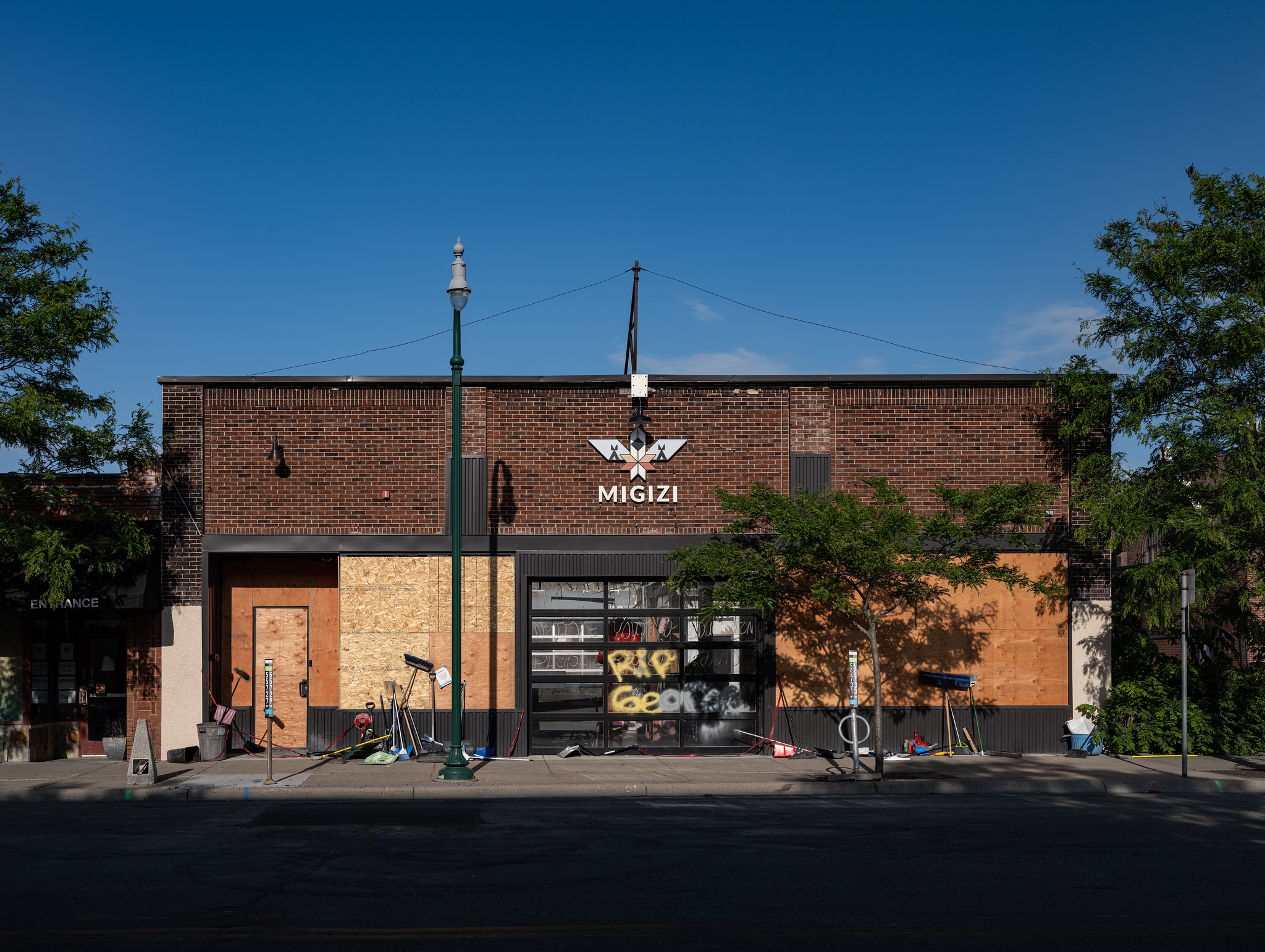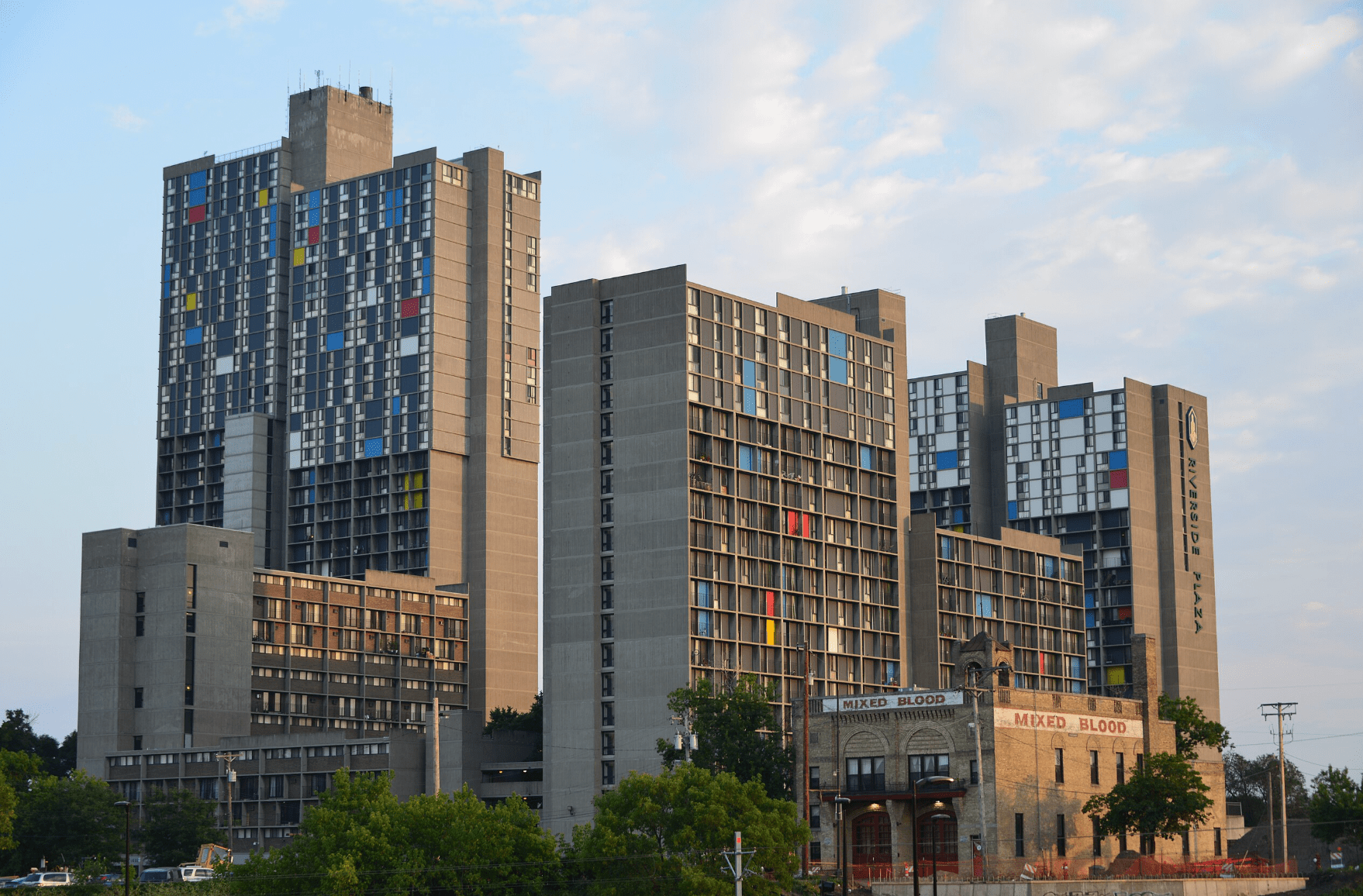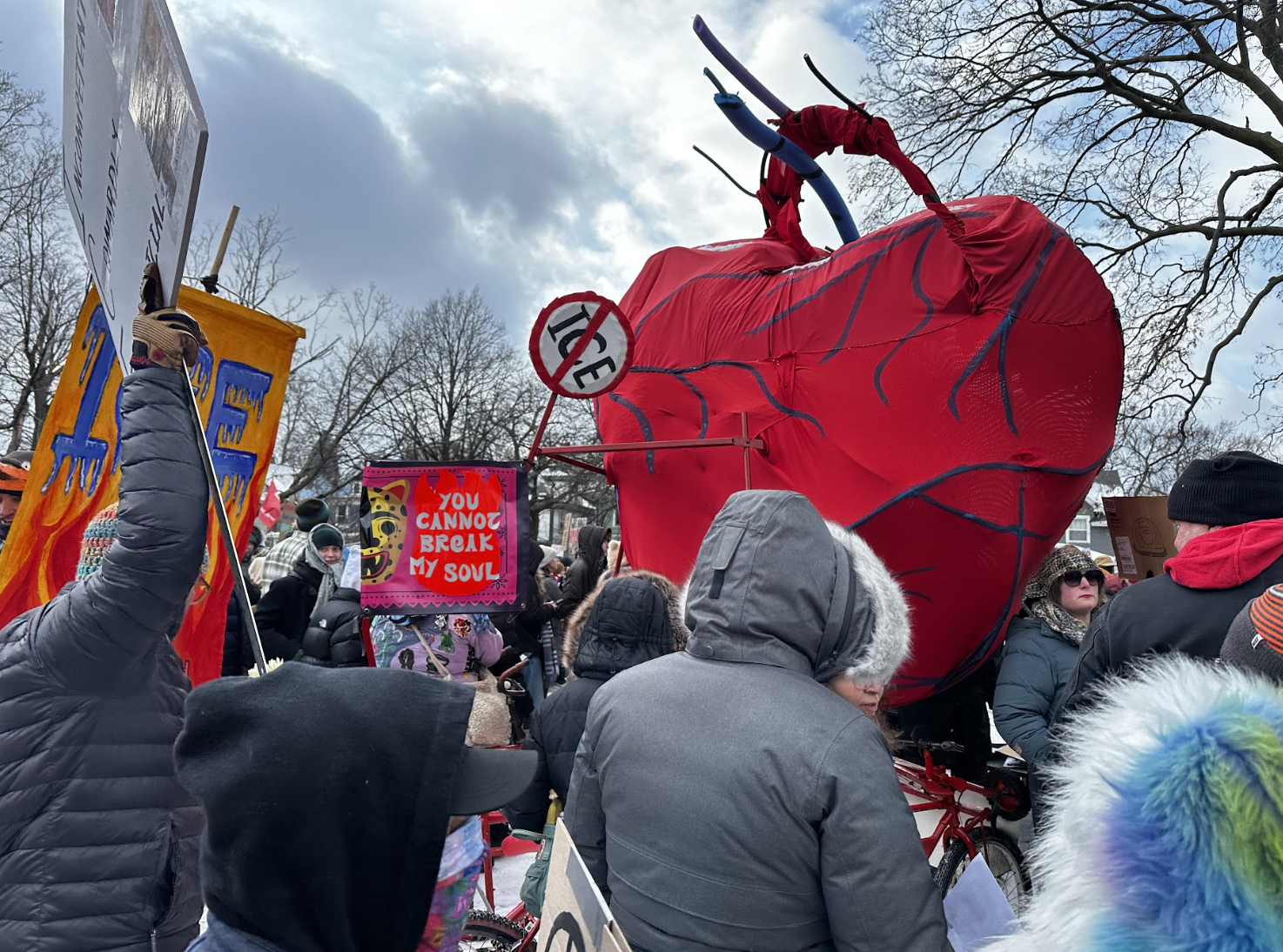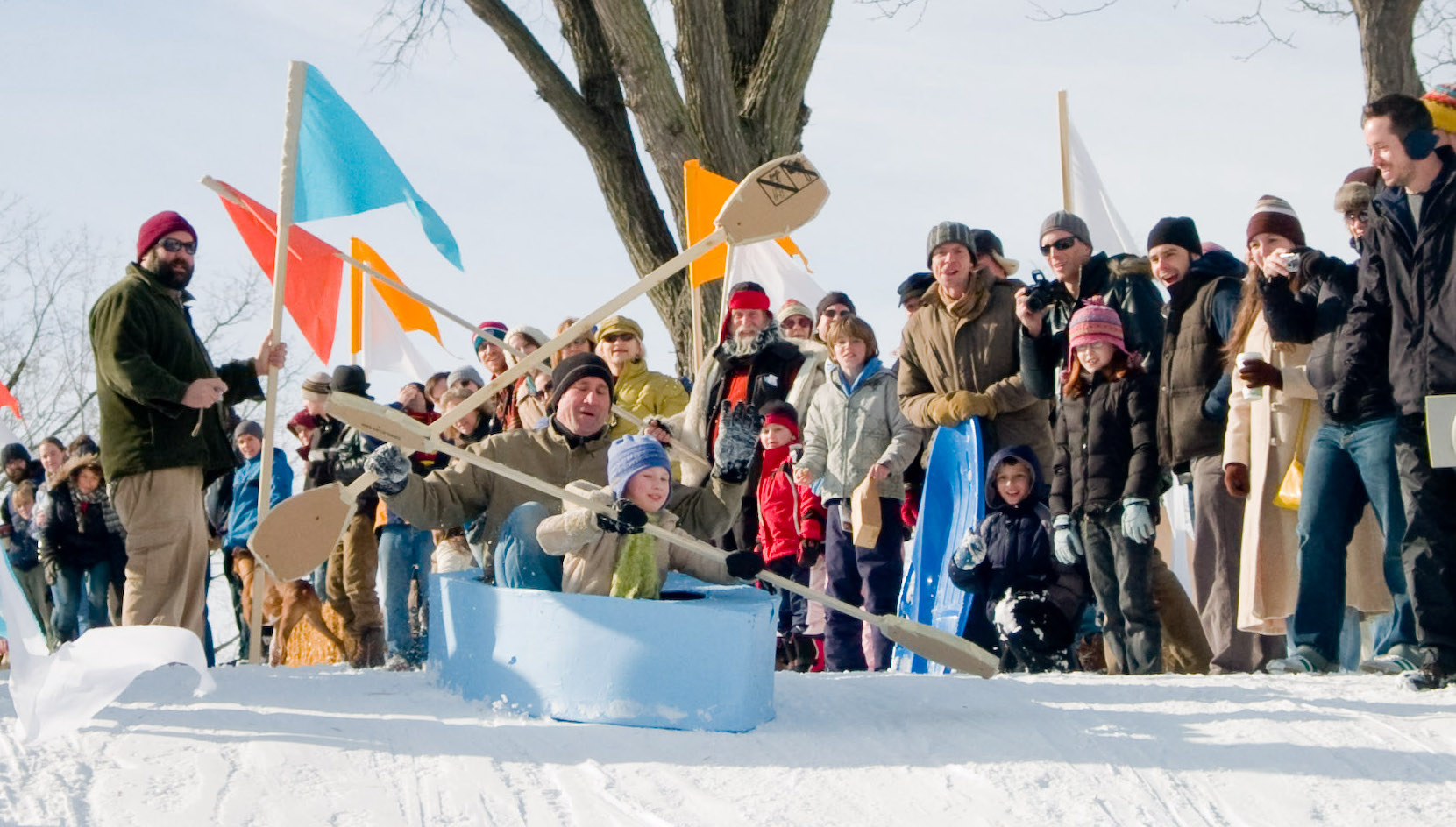The following is an essay from We Are Meant to Rise: Voices for Justice from Minneapolis to the World, edited by Carolyn Holbrook and David Mura. Published by the University of Minnesota Press, We Are Meant to Rise collects the work of dozens of Indigenous writers and writers of color as they bear witness to the racial justice uprising of 2020 and its continued impact.
Holbrook and Mura will moderate a panel discussion with four of the book's contributors, Kao Kalia Yang, Said Shaiye, Douglas Kearney, and Melissa Olson—whose essay "Let Me Tell You a Story" appears below—on Monday, November 29 at Next Chapter Booksellers. Tickets are available here.
Let me tell you a story.
That Tuesday, May 26, 2020, I woke up to the news that another Black man had been killed by Minneapolis police. I read the story on my phone, but I wasn’t ready to watch the video that accompanied it yet.
I had gotten up early to prep for an eight o’clock interview about a project I had helped start six months before for MIGIZI, a Minneapolis-based nonprofit whose mission is to nurture the educational, social, economic, and cultural development of American Indian youth. The project would enable MIGIZI Communications to digitize and preserve their legacy radio archive, a project that encompasses fifteen-plus years of first-in-time radio programming produced by MIGIZI’s First Person Radio program. The archive was stored on bookshelves inside a small utility closet in the center of the building and consists of approximately twelve hundred tapes and other miscellaneous recordings stored in cardboard boxes.
We had been awarded a small grant from the Minnesota Humanities Center for the project so decided to begin by digitizing twenty-four of the twelve hundred reels in the archive. While digging through the boxes, we came across a reel that was labeled “Prof. Momaday 1-3-77.” This recording was unique because much of the archive consists of news stories evidencing the movements for American Indian civil rights and treaty rights, stories about AIM and the Red Power activism of the 1970s, and a social history of Native journalism of the era.
Upon digitizing the reel, we learned that, as we had hoped, it was a recording of Kiowa author N. Scott Momaday giving a lecture at the University of Minnesota in January 1977. A university librarian was able to unearth a reference to the lecture in an old TV Guide magazine that gave listings for weekly radio specials. The listing showed that Professor Momaday’s lecture, “In Delight: The Character of the American Indian Oral Tradition,” had aired on The Saturday Show, a production of KUOM, the university’s campus radio station.
During his lecture, Professor Momaday referenced how his ancestors had survived bouts of epidemic disease in the mid-nineteenth century. His words seemed appropriate and necessary since we were now struggling with the daily realities of a new pandemic, the coronavirus, when the reel was discovered. I pitched the idea of re-airing the lecture to producers at Minnesota Public Radio, and they agreed. By the day of the interview, I had listened to the lecture several times in an attempt to describe it to Cathy Wurzer, who would be interviewing me on MPR’s Morning Edition show.
I wanted so badly to find the right words to talk about MIGIZI and our project, and about Professor Momaday’s lecture. I am an experienced interviewer, I am co–managing editor of the MinneCulture program at KFAI Fresh Air Community Radio in Minneapolis. But I have less experience being on the other end of the microphone, so I was nervous. I fumbled through the interview as best I could as I explained MIGIZI’s history and our digitization project.
MIGIZI Communications was founded in 1977 by a group of Native journalists and university students with a goal of countering the misrepresentations and inaccuracies about Native people in the media. The group chose the name MIGIZI, which means bald eagle in the Ojibwe language, because the bird signifies communication as well as guardianship and high standards. Those elements are what the group wanted the organization to aspire to throughout its history—excellence of communication, guardianship of the public trust, and high standards for reporting and ethics.
Its first weekly radio production, The Native American Program, set the stage for First Person Radio, a nationally distributed weekly public affairs program that took listeners to Indian Country once a week until February 2018, when longtime host Laura Waterman Wittstock decided to retire the show. Today, First Person Productions is a multimedia training effort for Native youth aimed at providing state-of-the-art storytelling skills, enhancing self-esteem, and improving academic performance. Other MIGIZI programming addresses youth needs in jobs, culture, leadership, and more.
After the interview with Cathy Wurzer, I watched the video of George Floyd being murdered, and like everyone else, I was rendered shaken and angry.
Two days later, on May 28, I woke up a few minutes earlier than usual. The night before, my partner John and I had watched the Third Precinct set afire on national TV, and just the day before I suddenly realized how close MIGIZI’s building stood in proximity to the center of the protest, just a block and a half away from the Third Precinct. I stood in the mirror nervously brushing my hair and trying to figure out what to do. I had to remind myself that I am the sole support for my aging mother, so as much as I wanted to join the protests, I decided not to, uncertain of the probability of contracting COVID-19 and passing it on to her.
Instead, I picked up my phone and frantically scrolled through my social media feed to see if I could find an update on MIGIZI’s building. A post by Binesikwe Means, MIGIZI’s lead media specialist, confirmed that the building was okay. I called Binesikwe and she said that the protestors and others had stayed off the street where MIGIZI was located, out of respect for a sidewalk clinic staffed by medical professionals treating injuries that protestors had sustained during the standoff with Minneapolis police the night before. Scrolling through my social media, I also learned that members of the American Indian Movement had stood guard in front of the building to protect it from fire and vandalism.
Nevertheless, I told John that I needed to see the building for myself. We jumped into John’s van and drove from our home in Northeast Minneapolis. As we got closer to the building, the chaos was palpable. The air was thick with smoke, and I remember that it smelled like oil paint. We parked five blocks away and walked to MI- GIZI as fast as we could. When we got there we saw minor tagging on the building’s south-facing wall but, thankfully, it was otherwise untouched by fire—a fact we marveled at as we walked past the smashed-in window of Gandhi Mahal, the restaurant next door.
People everywhere walked slowly in twos or threes to survey the damage, some snapping photos of the property damage. Fuck 12 in a ragged handwriting was tagged everywhere, and Black and Brown youths zipped around on their bikes observing people wandering around in shock and disbelief. It felt like kind of root shock, because nothing in the neighborhood resembled the orderly commercial corridor it had been just the day before. Debris was strewn everywhere we looked, and what was left of burned-out buildings was covered in soot. The streets were wet—not from water from fire truck hoses—but from spray from the broken windows where sprinkler systems had been set off. We stood for a few minutes at the corner directly across from the police station and watched a man standing on the other corner yelling into a bullhorn pointed at the charred Third Precinct: “Am I a Man? Am I a Man?”
We walked back to the van and cut slowly through alleys and side streets to find a way through the crowd that was beginning to reassemble. Once inside the van, John leaned against the door, lowered his shoulders, and set his chin. Then he looked over at me and said, “The building is not going to survive the night. If you are going to get the tapes out, we need to do it now.” Thankfully, it was only ten o’clock in the morning, so we knew we had time.
When we got home, I called Binesikwe and we made plans to move the archive. Next I called KFAI and was given permission to store the boxes in an empty studio where they could remain through the night. John and I returned to MIGIZI an hour later with boxes. Undeterred by detours and traffic barriers, we drove up the alley behind MIGIZI and parked at the back door. With the help of staff members and teens from the First Person Youth Production program, we were able to quickly pack up the tapes and stack the boxes into the van. Then we took off and made our way the twenty-some blocks to KFAI. One of the teens came with us and helped haul the boxes up to the third floor to the studio we were given to use for the night. The young man was unusually quiet. Later, I learned that his brother had been killed by police a year before.
By the time we finished moving the boxes to KFAI the adrenaline had started to wear off and we were all hungry. We bought lunch at the sub shop up the block from KFAI, then drove another block over to the Augsburg University campus. We found a picnic table and sat down to eat. While we were eating, John looked up and pointed to a bald eagle that was passing overhead, having flown from the direction of the river. I have never considered myself especially spiritual, but seeing the bald eagle at that moment, the bird for whom MIGIZI named itself, left the three of us feeling reassured that we had accomplished our work for that day.
Just as John predicted, MIGIZI’s building caught fire that night as embers from fires on either side of the building blew onto the roof. The executive director, Kelly Drummer, and her husband, Sam, and their daughter stayed in the building as long as they could. They called 911, but fire trucks never came. Soon they were told to evacuate.
The next morning, I returned to the radio station to check on the boxes and to make sure the room wasn’t too hot or too humid. The sun was shining on them directly from the window so I covered the windows with newspaper in order to avoid potential damage to the tapes. And I learned from station staff that volunteers were forming a neighborhood group to keep watch from the roof to guard the building through the coming night.
At that point, I decided to move the archive again, this time to my house in Northeast Minneapolis. We moved the boxes later that afternoon, and for the next five weeks those thirty-three boxes of MIGIZI’s archive took up twenty square feet in our small house between the living room window and my desk. It gave everyone at MIGIZI peace of mind. The boxes had traveled with the organization each time it moved in its forty-year history. Some of those years, the boxes must have been stored in basement cellars; they were caked in dust and smelled of decay.
I thought of the stories held on those reels, and of the journalists whose many hundreds of hours are recorded there. And I thought of community members, many of whom I’d known as a younger person, whose voices are preserved there. So as the weeks rolled on, I started to think of the tapes like an auntie or an uncle who had come for a long visit. Minnesota’s stay-at-home orders and continued curfews meant that I rarely ventured outside. Home had become a place of refuge from the pandemic, but the boxes were stacked between my desk and the window—a physical reminder of the violence that took George Floyd’s life and the violence of the fires that had destroyed parts of the city.
A librarian from Augsburg University reached out immediately following the loss of MIGIZI’s building and asked what he could do to help. Appreciative of his offer, we decided to move the archive to Augsburg’s library. It took me several weeks, but eventually I was able to create a basic inventory. I reboxed all of the tapes and drove them over to Augsburg’s campus library. The precautions in place for the pandemic meant there was an empty classroom where they could be stored.
The Momaday lecture had been set to air on Thursday, May 28. It was understandably pushed back and did eventually air in the first week of June. I’ve listened again and again, and each time I hear it a little differently. There is Momaday in his booming voice quoting his fellow writer Isak Dinesen, reminding us, “All sorrows can be borne if you put them into a story. I am fond of telling stories; let me tell you a story.”
There’s not a week that goes by that my mom doesn’t ask me over the phone how the project is going. The tapes are stored safely at Augsburg and are occasionally checked in and out by the archivist on our project who recently posted: “Today’s adventures in archiving. Came across a few years of very poor quality tape that would not play back without squeaking/distorting. Froze my snack salami to cool the heads down and lower the friction coefficient. Fifteen minutes later, it played back like a charm!”
“Let Me Tell You a Story” by Melissa Olson is published by the University of Minnesota Press in We Are Meant to Rise: Voices for Justice from Minneapolis to the World edited by Carolyn Holbrook and David Mura. Copyright 2021 by Carolyn Holbrook and David Mura. “Let Me Tell You a Story” copyright 2021 by Melissa Olson. Used by permission.







